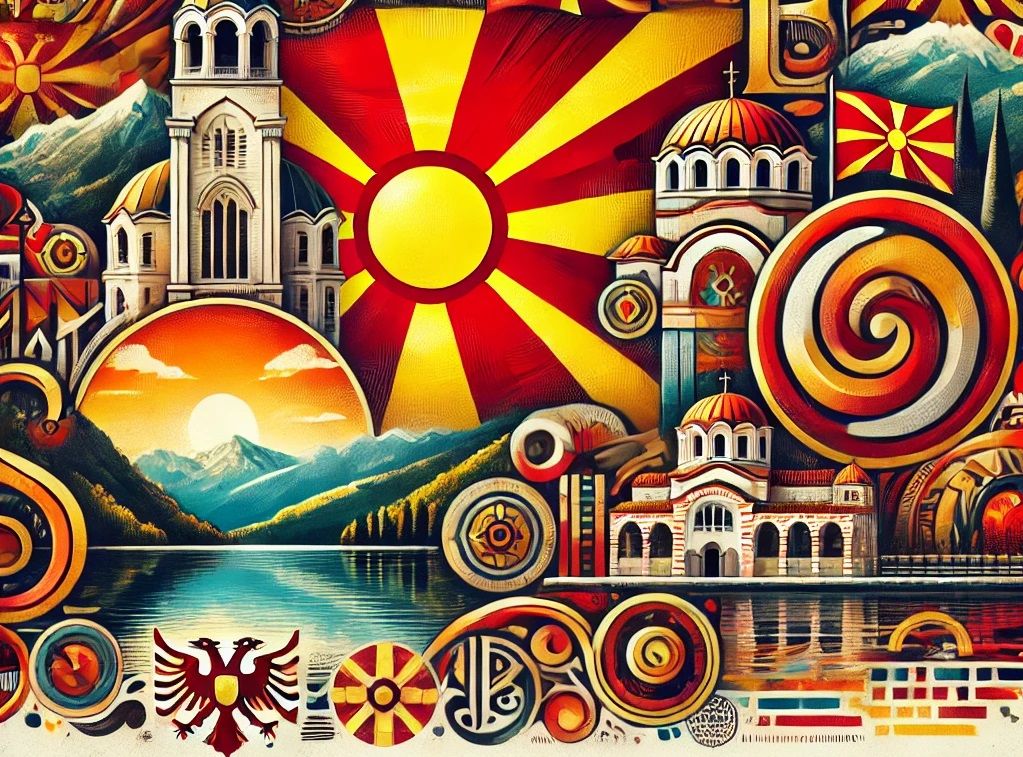Blog

Macedonian is a vibrant South Slavic language spoken in North Macedonia and beyond, with a rich cultural heritage and unique linguistic features. From its Cyrillic script and attached definite articles to its poetic charm and colorful idioms, Macedonian tells the story of a nation’s history, creativity, and resilience.
Macedonian is a unique and vibrant language spoken in North Macedonia and beyond. As one of the South Slavic languages, it has a rich history, distinctive features, and cultural significance. Let’s dive into some interesting facts about Macedonian, sprinkled with examples to give you a feel for the language!
Macedonian and Bulgarian are so similar that some linguists describe them as dialects of the same language family. However, Macedonian has its own identity, including unique vocabulary, grammar, and pronunciation.
For example, the word for “house” in Macedonian is куќа (kukja), while in Bulgarian, it’s къща (kashta).
Unlike Serbian or Croatian, which have centuries-old written traditions, the Macedonian literary standard was officially codified only in 1945. This makes it a relatively young standardized language.
Macedonian is written in the Cyrillic script, but with a twist. It includes unique letters like ѓ (gj) and ќ (kj), which are absent in other Cyrillic alphabets.
Example: Мајка (Majka) means "mother," while Сонце (Sonce) means "sun."
Most Slavic languages, like Russian and Polish, use cases to show grammatical relationships between words. Macedonian skips this complexity and relies on word order and prepositions instead.
Example:
Notice how the meaning is clear without changing word endings.
Unlike English, where definite articles are separate words ("the house"), Macedonian attaches them directly to the noun. There are also three different forms of the definite article, depending on spatial relationships.
Example:
Macedonian is full of colorful sayings that reflect the culture and humor of its speakers.
Example:
Macedonian is known for its lyrical quality, making it perfect for poetry and traditional songs. Famous poets like Kočo Racin have used the language to capture the soul of Macedonian culture.
Example of a traditional song:
Болен ми лежи Миле Поп Јорданов. (Bolen mi leži Mile Pop Jordanov.)
Translation: "Mile Pop Jordanov lies ill."
Macedonian has three main dialect groups: Northern, Western, and Eastern. These dialects reflect the country’s diverse cultural influences and geographic regions. The standard language is based on the Western dialect, particularly around the city of Bitola.
Due to its location in the Balkans, Macedonian has borrowed words from neighboring languages like Turkish, Greek, Serbian, and Albanian.
Examples:
While North Macedonia is home to about 2 million speakers, the Macedonian diaspora spreads the language far and wide, from Australia to Canada and the U.S.
Conclusion
Macedonian is much more than just a means of communication — it’s a window into a vibrant culture and a testament to the resilience of a nation. Its quirks, history, and poetic charm make it a fascinating language worth exploring.